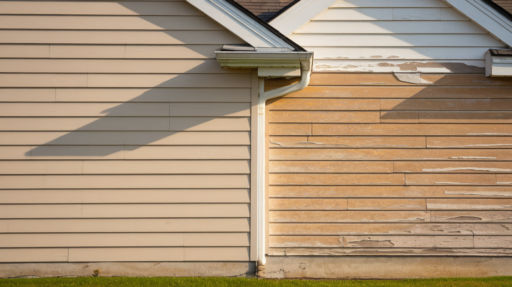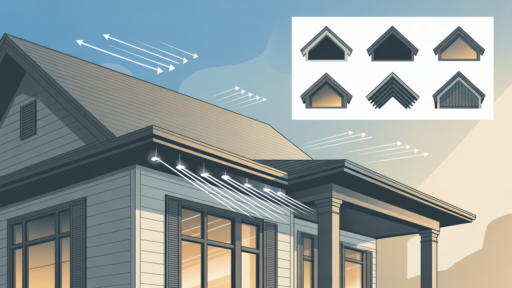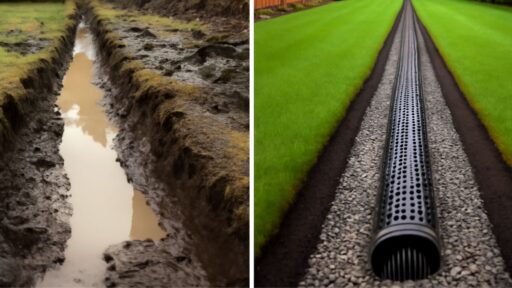Hardie Board siding is strong, reliable, and made to last-but that doesn’t mean it never needs care.
One of the biggest questions I hear is, “How often should I paint it?” It’s a smart question, and knowing the answer can help keep your home looking great while protecting it from the weather.
I’ve learned that repainting at the right time can make a big difference. It keeps the color fresh, prevents damage, and saves money down the road.
I’ll walk you through how often you should repaint, what signs to look for, and what factors can affect how long your paint job lasts, such as your local weather, the type of paint you use, and how it was applied previously.
You don’t have to be an expert to figure this out. I’ll keep things clear and practical so you feel confident taking care of your siding.
If you’re doing the work yourself or hiring help, I’m here to make it easier for you.
What Is Hardie Board Siding?
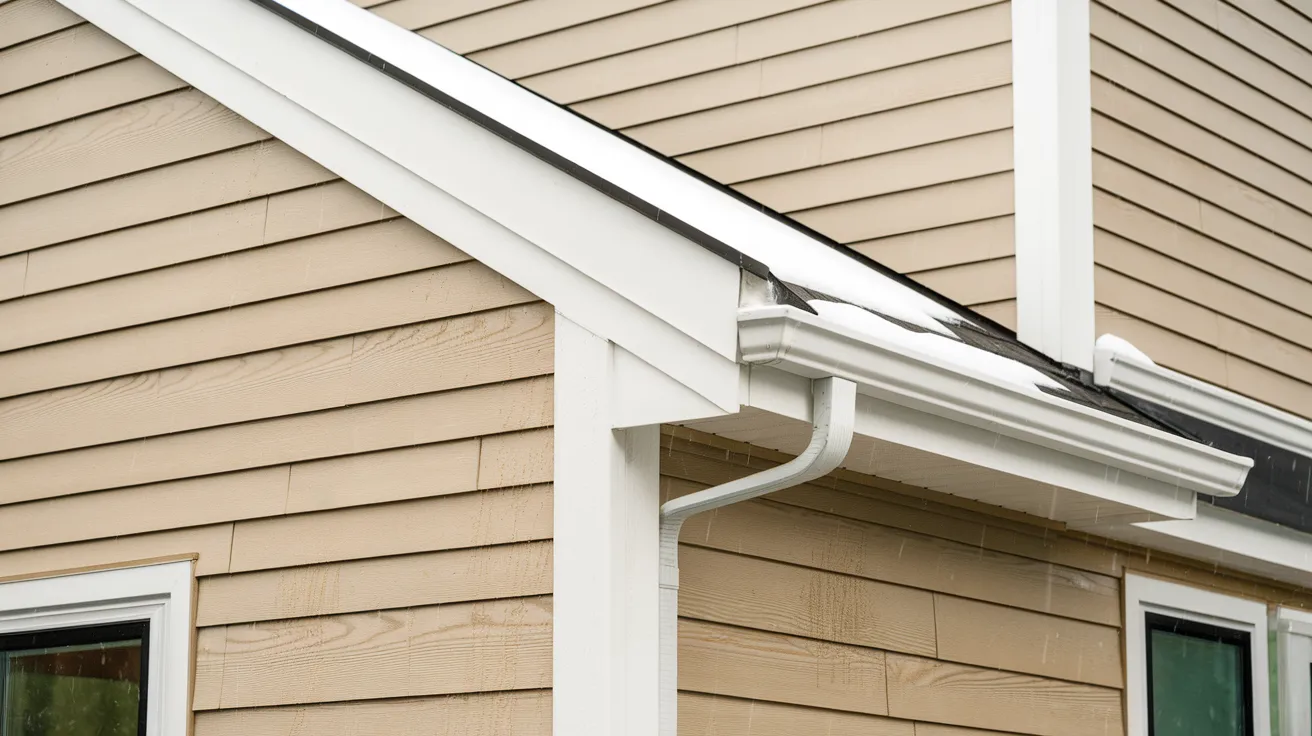
Hardie Board siding is a type of fiber cement siding made from a mix of cement, sand, and cellulose fibers.
It’s designed to look like wood but is much stronger and more durable. Unlike real wood, it doesn’t rot, warp, or get damaged by insects.
This siding is popular because it can handle harsh weather, including strong sunlight, heavy rain, wind, and even snow.
It also adds an extra layer of safety since it is fire-resistant.
Many homeowners choose Hardie Board for its long-lasting performance and low maintenance needs.
However, while it’s tough, it still needs care from time to time-especially when it comes to paint.
Paint helps protect the surface and keeps it looking fresh. Over the years, even the best paint can fade or peel.
That’s why it’s important to know when to repaint to keep the siding in good shape and protect the home.
Why Painting Hardie Board Is Important?
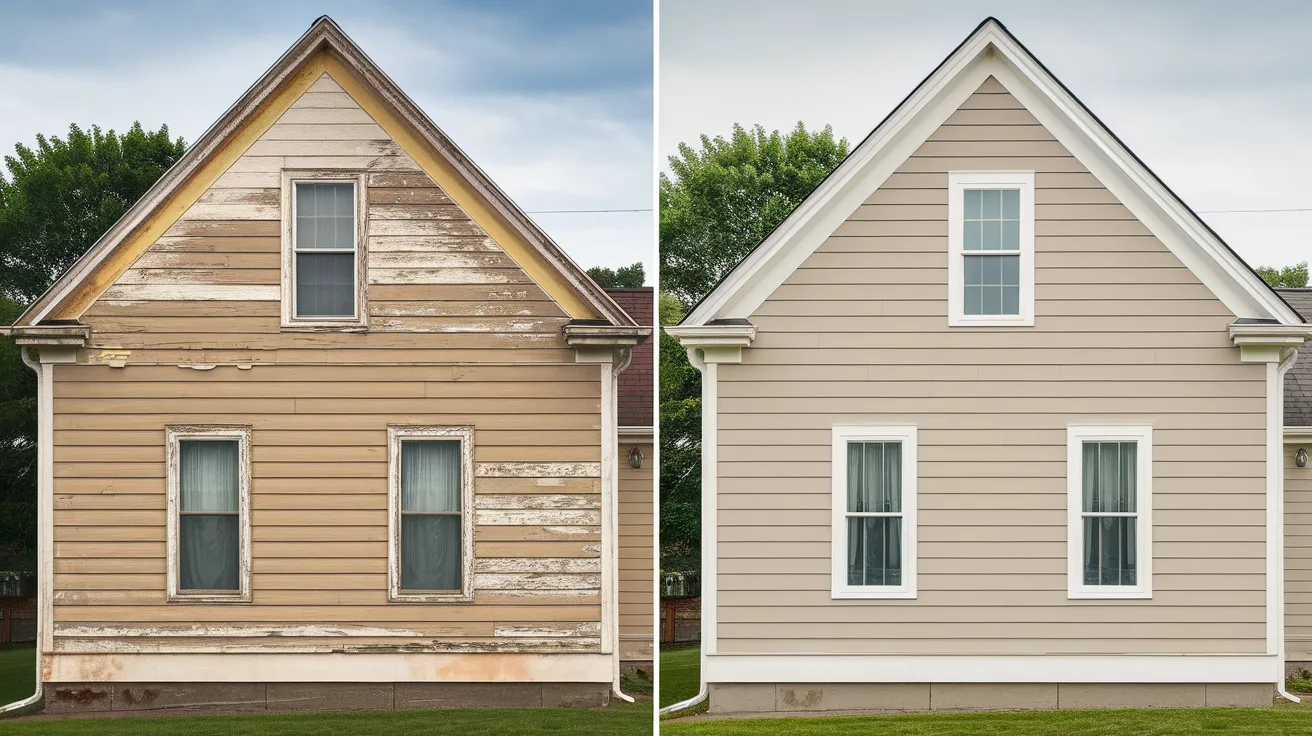
Painting Hardie Board siding isn’t just about making a house look nice; it also helps protect the siding from damage.
Over time, sunlight, rain, wind, and dirt can wear down the paint. When the paint starts to fade, crack, or peel, the siding underneath becomes more exposed to weather and moisture.
Keeping the siding freshly painted helps seal the surface and stop water from getting in.
It also protects the fiber cement material from stains, mildew, and everyday wear and tear. Well-painted siding lasts longer and requires fewer repairs.
Fresh paint also boosts a home’s curb appeal, which can be important for both comfort and value.
Whether the goal is to protect the siding, update the look, or both, painting on the right schedule is key.
Taking care of the paint now can help prevent bigger problems later and keep the house looking its best for years.
How Often Should You Paint Hardie Board?
On average, Hardie Board should be repainted every 8 to 15 years; however, the timing can vary based on several key factors.
The factors that affect how often it needs repainting:
- Type and quality of paint: Using high-quality, 100% acrylic exterior paint can make the finish last much longer and protect it better against the weather.
- Primer used before painting: A strong, fiber cement-specific primer helps the paint stick better and stay in place over time.
- Weather and climate: Homes in areas with strong sun, heavy rain, or high humidity may need repainting more often due to faster wear and fading.
- Ongoing maintenance: Regular cleaning, quick touch-ups, and yearly inspections can help keep the paint in good condition for a longer period.
Signs It’s Time to Repaint
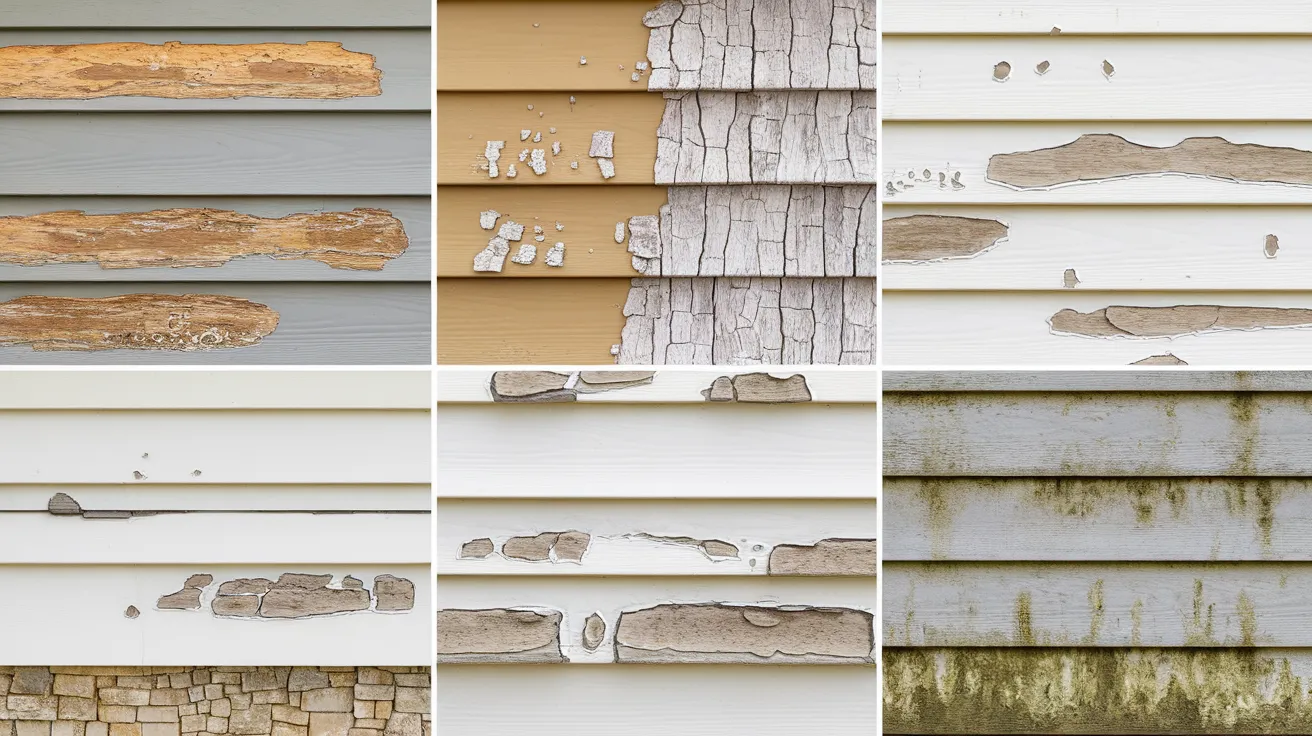
Even if it hasn’t been 8 to 15 years yet, some signs can tell you it’s time to repaint your Hardie Board siding.
Keeping an eye out for these signs helps you catch problems early and keep the siding protected.
- Fading or dull color: The paint starts to lose its brightness or looks washed out. This happens over time, especially in areas with strong sunlight.
- Cracks or chipping in the paint: Small cracks or chips in the surface can let in moisture and lead to bigger problems if left untreated.
- Peeling or bubbling paint: When paint lifts off the siding or forms bubbles, it’s no longer protecting the surface properly.
- Exposed siding or raw patches: If the paint has worn off completely in spots, the siding underneath is at risk of damage.
- Mildew or stains that won’t wash off: Dark streaks or spots that stay even after cleaning may mean it’s time for a fresh coat.
DIY or Should You Hire a Professional?
Painting Hardie Board siding can be a do-it-yourself project, but it depends on the size of the job and how comfortable you are with tools and ladders.
If the area you need to paint is small, and you have some experience with painting, it might be something you can handle on your own.
Just make sure you have the right materials, know how to apply primer, and can work safely-especially if the siding is high up.
On the other hand, large homes or siding in bad shape are often better handled by a professional.
Hiring a professional means the job gets done faster, more safely, and with a smooth, long-lasting finish.
While doing it yourself may save money at first, a professional job can often last longer and look better.
The best choice depends on your budget, the tools available to you, and your level of confidence in the work.
Tips to Make the Paint Last Longer
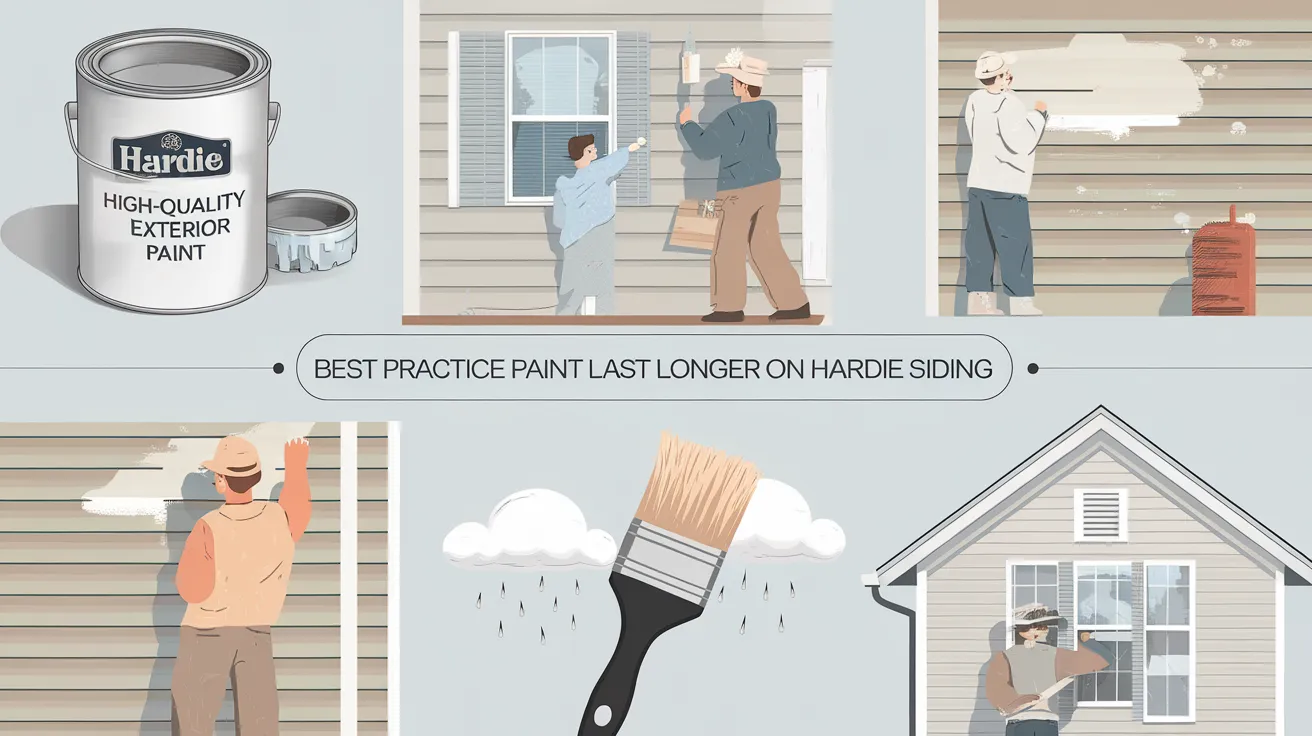
With the right care, paint on Hardie Board siding can last many years. These tips can help keep the siding looking fresh and protected for as long as possible.
- Use high-quality paint: Choose 100% acrylic exterior paint. It adheres well to fiber cement and withstands better against sun, rain, and temperature fluctuations.
- Always apply primer first: Before painting, use a primer made for fiber cement. It helps the paint stick better and keeps the color from fading too soon.
- Clean the siding before painting: Dirt, dust, or mildew can prevent paint from adhering properly. Wash the siding with a gentle cleaner and let it dry completely before painting.
- Avoid painting in bad weather: Painting during very hot, cold, or rainy days can cause problems with drying and sticking. Pick a mild, dry day for best results.
- Perform regular checkups and touch-ups: Inspect the siding annually. Small fixes, such as sealing cracks or repainting small spots, can help avoid big repairs later.
Conclusion
When I first learned about Hardie Board siding, I didn’t realize how much a simple paint job could affect its look and strength.
Over time, I’ve seen how repainting at the right time can make a significant difference.
It keeps the siding protected from the weather, helps it last longer, and makes the whole house look fresh and well-maintained.
Knowing when to paint and watching for signs like fading, peeling, or water stains can save money and prevent more extensive repairs later.
If you choose to paint it yourself or hire someone, keeping up with this one task can go a long way.
I hope this helped you feel more confident about taking care of your siding.
It’s not just about color, it’s about keeping your home strong, safe, and looking its best for years to come.
Want to know how durable your siding really is? Read the full post How Long Does Hardie Board Last? Full Lifespan Guide to learn how to protect and extend its life.
Frequently Asked Questions
Can you paint over existing paint on Hardie board?
Yes, as long as the existing paint is in good shape. Make sure the surface is clean, dry, and free of peeling paint. Lightly sanding glossy areas can also help the new paint stick better.
How does climate affect painting frequency?
Weather plays a big role. Homes in sunny, rainy, or humid areas may need to be repainted sooner because paint wears down faster. Milder climates usually allow the paint to last longer between coats.
What’s the cost to repaint Hardie board siding?
Costs can vary, but most homeowners spend between $1.50 and $3.50 per square foot. Prices depend on home size, paint quality, and whether you hire a professional or do it yourself.
How do you know if your siding needs more than paint?
If there are cracks, warping, soft spots, or signs of water damage, paint won’t fix the problem. These are signs that parts of the siding may need repair or replacement first.

